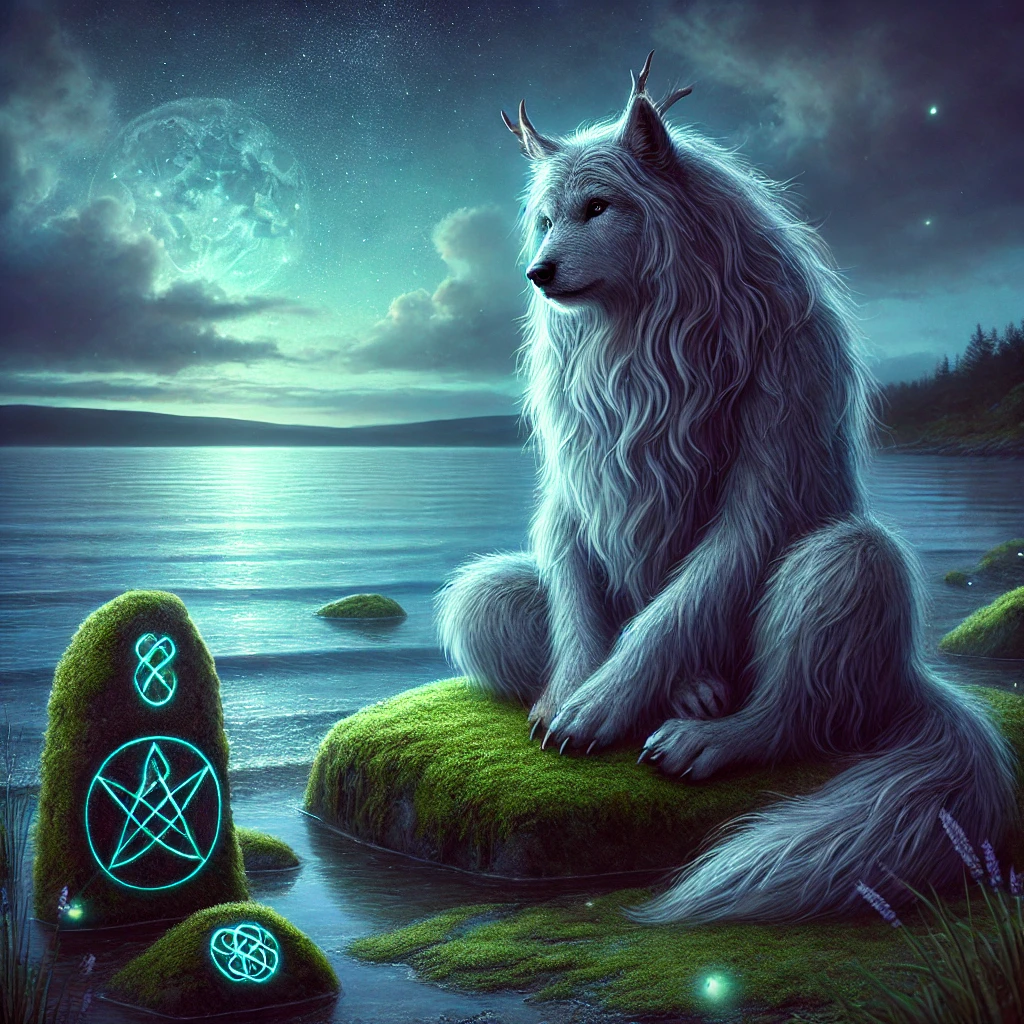The Wulver: Scotland’s Friendly Werewolf
Author: Lachlan Stewart
Date: March 20, 2025
The Wulver: Scotland’s Friendly Werewolf
When you think of werewolves, your mind probably jumps to terrifying creatures, full moons, and Hollywood-style horror. But Scotland, being the land of surprises that it is, has a werewolf that’s- wait for it- actually friendly. Meet the Wulver, a shaggy, wolf-headed creature that prefers handing out fish to terrorizing villagers. Quite the plot twist, aye?
A Werewolf Unlike Any Other
The Wulver isn’t your typical cursed human who transforms under the full moon. This fella is something else entirely. According to old Shetland folklore, the Wulver was never human to begin with, just a creature that looked like a cross between a man and a wolf but with no interest in harming anyone. In fact, he was known to be rather kind-hearted.
Instead of lurking in the shadows waiting for a victim, the Wulver spent his time fishing. Yes, fishing. He was said to live in a cave in the Shetland Islands and could often be found sitting on a rock, now called the Wulver’s Stane, calmly casting his line into the water. When he had more fish than he needed, he would leave them on the doorsteps of poor families who were struggling to find food. If that doesn’t make him the world’s most considerate werewolf, I don’t know what does.
The Wulver’s Stane – A Real Place?
Folklore often blurs the line between legend and reality, and the Wulver’s tale is no different. While no physical evidence of the creature has ever been found, the Wulver’s Stane is a real location in Shetland, believed to be the very rock where he once sat and fished. Locals and curious visitors have searched for signs of him for generations, but like many mythical beings, he remains elusive.
Could it be that he still lingers in the misty shores of Shetland, watching from a distance? Or has time simply erased the footprints of this gentle guardian?
Where Did This Legend Come From?
Like most Scottish folklore, no one knows exactly when the legend of the Wulver began. Some believe he represents an old memory of a time when wild, wolf-like people roamed the land. Others think he could be tied to Pictish mythology, as carvings of wolf-headed figures have been found in ancient stonework.
There’s also speculation that the Wulver could be linked to Celtic shapeshifting legends, similar to selkies and fae creatures. Perhaps he was once considered a nature spirit, a guardian of Shetland’s lands and waters.
Whatever his origins, the Wulver’s story is different from the usual man-beast horror tales. While werewolves in other legends are cursed, violent, and often tragic figures, the Wulver just wants to live in peace, fish, and occasionally help out struggling humans. Maybe we could all take a wee bit of inspiration from him.
Could the Wulver Be Real?
Of course, the big question is, was the Wulver ever real, or was he simply a tale passed down through the ages? While skeptics will say he’s just another piece of folklore, some locals claim the Wulver was based on sightings of a mysterious creature that once roamed the Shetland Islands. In the 19th and early 20th centuries, there were scattered reports of a large, hairy, wolf-like figure spotted near rivers and shorelines. Could this have been the last of the Wulver kind?
Even today, legends of cryptids, hidden creatures that defy explanation, continue to circulate. From the Beast of Bodmin Moor in England to the Dogman of Michigan, the idea of wolf-like beings walking among us is far from forgotten.
Why You Won’t Find the Wulver Today
Some say he disappeared as modern life crept into Shetland. Maybe he retreated into the deepest, most hidden parts of the islands, avoiding the noise and nonsense of humans. Or maybe, just maybe, he’s still out there, watching over the land, making sure the people of Shetland never go hungry.
One thing’s for sure, the Wulver is a reminder that not all legends are about terror and doom. Sometimes, folklore gives us a glimmer of kindness wrapped in mystery. And honestly, who wouldn’t want to believe in a good-hearted werewolf who just wants to fish in peace?
The Wulver vs. Werewolves of Other Cultures
Unlike the Wulver, most werewolves across folklore are dangerous, cursed beings. Here’s how the Wulver compares to some of the most famous werewolf legends:
European Werewolves – Often depicted as humans transformed under a full moon, many werewolves of European legend were feared for their bloodthirsty nature.
The Rougarou (Louisiana, USA) – A Cajun legend of a terrifying wolf-man that preys on those who break certain rules, especially during Lent.
The Beast of Gévaudan (France) – A real historical mystery where a wolf-like creature terrorized villages in the 18th century.
The Skinwalkers (Navajo Mythology, USA) – Shapeshifters with dark magic, capable of turning into wolves and other creatures.
Compared to these fearsome creatures, the Wulver is practically the guardian angel of werewolves.
What Do You Think?
If you had a mythological creature leaving food on your doorstep, what would you hope for? A Wulver with a basket of fish, or maybe delivers pizza? (Now that’s a legend I’d love to uncover!) Let me know your thoughts in the comments!




